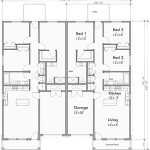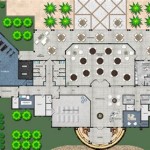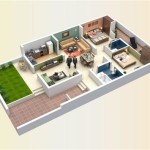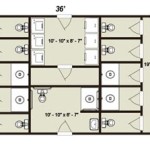15 Lakhs Budget House Plans In Kerala 2024
Building a home in Kerala demands meticulous planning, especially when operating within a defined budget. In 2024, constructing a house for around 15 lakhs requires strategic choices regarding design, materials, and labor. This article explores various aspects of planning a house within this budget in Kerala, offering insights into optimizing resources while maintaining quality and functionality.
The primary factor influencing the feasibility of building a house within a 15 lakhs budget is the size of the house. Generally, a budget of this amount would typically allow for a house ranging from 600 to 800 square feet. This size is suitable for a compact 2-bedroom house, designed with efficiency in mind. Any increase in the planned square footage will necessitate adjustments in other areas, potentially impacting the quality of materials or the complexity of the design.
The design of the house needs to be simple and functional. Elaborate designs with intricate details will inevitably increase construction costs. Opting for a rectangular or square floor plan minimizes material wastage and simplifies the construction process. Gable roofs are a cost-effective roofing option compared to more complex designs. It's crucial to prioritize essential features and minimize unnecessary embellishments.
Material selection plays a pivotal role in keeping the project within budget. Locally sourced materials are generally more cost-effective than materials that need to be transported from other regions. Considering alternatives to traditional materials can also lead to significant savings. For example, using interlocking blocks instead of traditional bricks can reduce construction time and labor costs. Similarly, exploring options for cost-effective flooring, such as polished cement or locally manufactured tiles, can contribute to staying within budget.
Labor costs will comprise a significant portion of the overall budget. Obtaining multiple quotes from contractors is essential for securing competitive pricing. Negotiating fixed-price contracts provides more cost certainty compared to daily wage agreements. Supervising the construction process diligently will help minimize errors and rework, which can lead to unexpected expenses. Careful planning of each stage of construction, along with efficient resource management, will help in controlling labor costs effectively.
Permits and approvals are an unavoidable part of the construction process. It's crucial to factor in the costs associated with obtaining necessary permits from the local authorities. Delays in obtaining permits can result in increased material costs and labor charges. Therefore, initiating the permit application process well in advance of the construction start date is a prudent measure.
Interior finishes, including plumbing fixtures, electrical fittings, and paint, also need to be carefully considered. Selecting basic, functional options rather than high-end brands is essential for maintaining budget adherence. Focus on essential features like adequate lighting, functional plumbing, and quality electrical wiring, while postponing non-essential decorative elements for future phases.
Land preparation is another critical aspect to consider. The condition of the land can significantly impact the foundation costs. If the land requires extensive leveling or soil stabilization, it will add to the overall project expenses. Conducting a thorough soil test prior to construction can help in identifying potential issues and planning accordingly.
Sustainable building practices can contribute to long-term cost savings. Incorporating features like rainwater harvesting and solar water heaters can reduce utility bills, offsetting the initial investment over time. Optimizing natural lighting and ventilation can reduce reliance on artificial lighting and air conditioning, leading to further cost savings.
Building a house within a 15 lakhs budget in Kerala requires careful planning, strategic material selection, and efficient labor management. Compromises may be necessary in certain areas, but a well-planned and executed project can result in a functional and comfortable home, even with budgetary constraints.
Key Points for Budget-Friendly House Construction
The following points summarize the key areas to focus on when developing house plans for a 15-lakh budget in Kerala:
Optimizing the House Design and Layout
The design process needs careful consideration to balance functionality, aesthetics, and affordability. Prioritizing a simple layout and a smaller footprint is crucial in controlling costs.
Simple Floor Plan: Opt for a rectangular or square floor plan, as these are more cost-effective to construct than complex shapes. Intricate designs increase material wastage and labor hours. A simple design also enables easier future expansion.
Compact Dimensions: The size of the house must directly reflect the budget. Aim for a house size between 600 and 800 square feet. This provides sufficient space for a small family while staying within budget constraints.
Vertical Construction: Consider building a two-story structure if land is limited. This maximizes the use of the available land and can be more cost-effective than expanding horizontally, depending on foundation requirements.
Minimize Embellishments: Avoid unnecessary architectural details and decorative elements that add to the overall cost without significantly enhancing the functionality of the house. Focus on practical features and clean lines.
Open Plan Living: Consider an open-plan living area that combines the living room, dining area, and kitchen. This maximizes space and reduces the need for internal walls, which translates to cost savings.
Strategic Material Selection
Choosing the right materials is critical for minimizing construction costs without compromising the structural integrity and durability of the house. Emphasis should be placed on locally available, cost-effective materials.
Local Materials: Prioritize using locally sourced materials. These are generally more affordable due to lower transportation costs. Research local suppliers and compare prices to get the best deals.
Interlocking Blocks: Consider using interlocking blocks as an alternative to traditional bricks. These blocks are faster to install, reducing labor costs, and require less mortar.
Cost-Effective Roofing: Choose a simple gable roof design, as it is more affordable to construct than complex roof structures. Galvanized iron (GI) sheets are a cost-effective roofing option, but ensure they are properly insulated to minimize heat transfer.
Basic Flooring: Opt for affordable flooring options such as polished cement, ceramic tiles or locally manufactured tiles. These are significantly cheaper than marble or granite.
Recycled Materials: Explore the possibilities of using recycled or reclaimed materials where appropriate. This can significantly reduce material costs and contribute to sustainable building practices.
Timber Alternatives: Consider using engineered wood products or treated softwood as alternatives to expensive hardwoods for doors and windows. This can significantly reduce material costs without compromising structural integrity.
Efficient Labor Management and Construction Practices
Effective labor management and streamlined construction practices are essential for controlling costs and ensuring timely project completion. Diligent supervision and negotiation are vital.
Multiple Quotes: Obtain quotes from multiple contractors to compare prices and negotiate the best deal. Check references and verify the contractor's experience and reputation.
Fixed-Price Contracts: Negotiate fixed-price contracts with contractors to minimize the risk of cost overruns. This provides more cost certainty compared to daily wage agreements.
Supervision: Supervise the construction process closely to ensure quality workmanship and minimize errors. This will help prevent costly rework and delays.
Phased Construction Consider phased construction. Prioritize the essential structural elements and basic amenities. Additional features and finishing can be added later as funds become available. This allows for occupying the home sooner while improving it gradually.
Optimize Labor: Plan the construction schedule to ensure efficient use of labor. Avoid delays that can lead to increased labor costs. Coordinate the activities of different trades to minimize downtime.
Prefabricated Elements: Explore the use of prefabricated elements, such as wall panels or roof trusses. These can be manufactured off-site and quickly assembled on-site, reducing construction time and labor costs.
Effective planning, careful material selection, and streamlined construction practices are the core components contributing to building a home within a 15 lakhs budget in Kerala. By focusing on these areas, it is possible to achieve the dream of homeownership without exceeding financial limitations.

Top 5 Small House Design In Kerala Below 15 Lakhs C T Home Designs

3 Bedroom House Design 700 Sqft Under 15 Lakh Budget Home
.webp?strip=all)
25 X 35 Simple House Plan Image Under 15 Lakhs Budget

Fabulous 15 Lakhs House In Kerala 2bhk Home Design C T Designs

15 Home Designs Below 1000 Sqft In 4 To Lakhs With Free Plan Kerala Planners

Fabulous 15 Lakhs House In Kerala 2bhk Home Design C T Designs

15 Home Designs Below 1000 Sqft In 4 To Lakhs With Free Plan Kerala Planners

15 Home Designs Below 1000 Sqft In 4 To Lakhs With Free Plan Kerala Planners

15 Lakhs House In Kerala Home Design And Floor Plans 10k Dream Houses

15 Lakh 2bhk Double Floor House Design Cute Small Bughet Home








